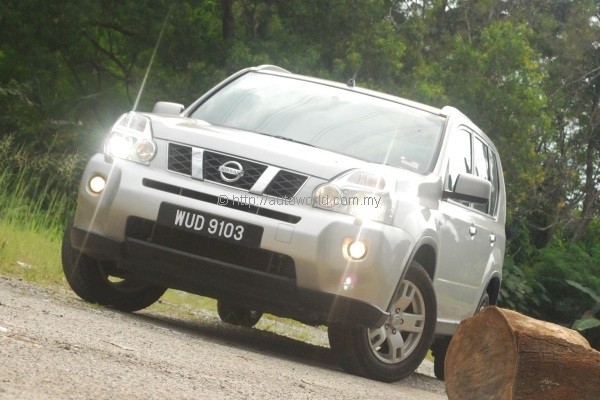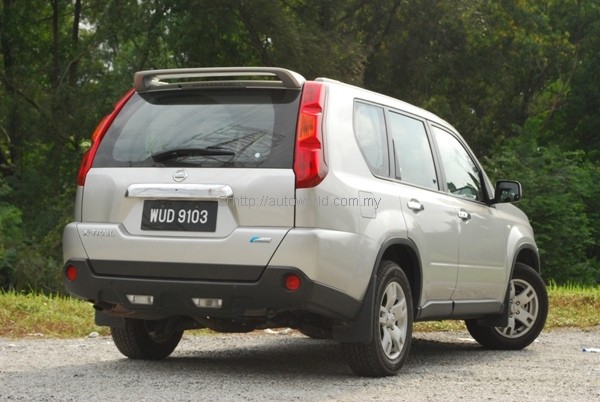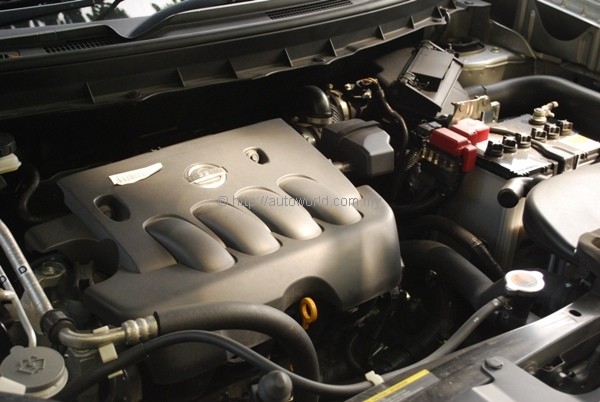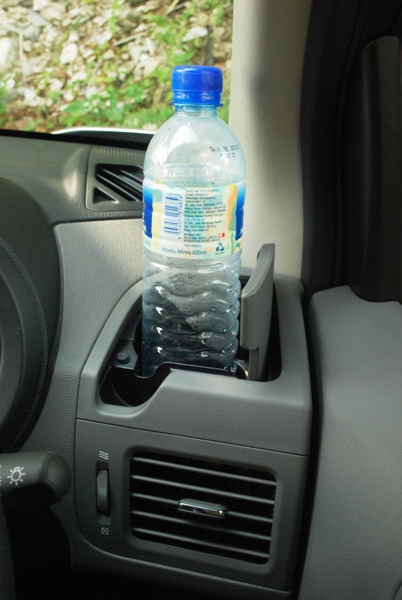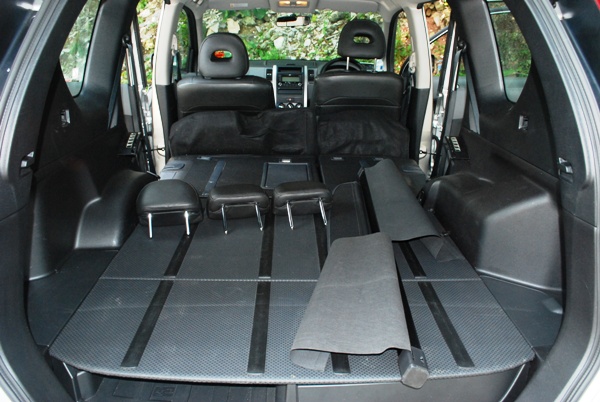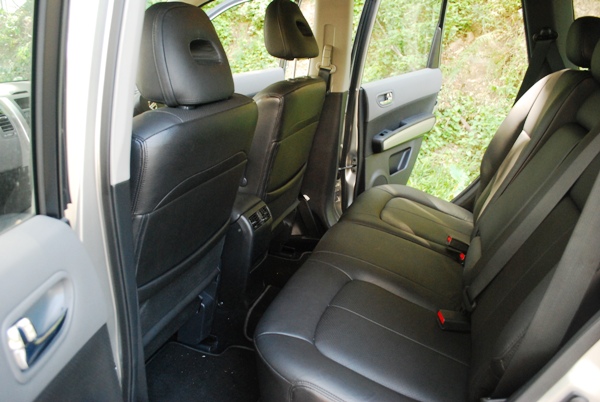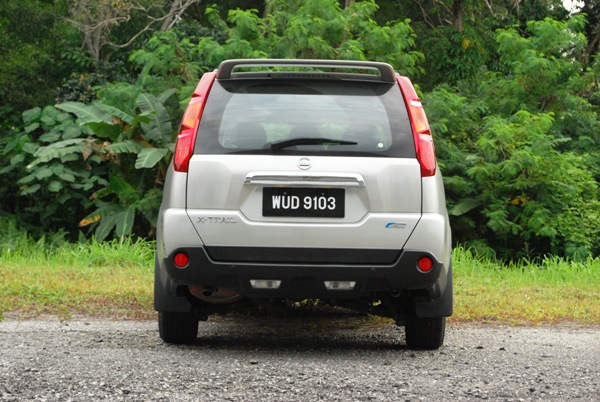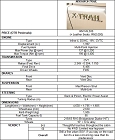Nissan X-Trail – Tough guy gets smooth
Nissan took a long time to dabble its fingers into the soft-roader market. The first generation X-Trail was launched in 2000 when rivals such as the Honda CR-V, Toyota RAV4, and Subaru Forester were the established choices of a then-rapidly growing market segment.
After its launch, the X-Trail quickly became a best-seller in its home market in Japan, and by 2003, it arrived in Malaysian shores. Local Nissan distributors, Edaran Tan Chong Motor Sdn Bhd, was able to secure local assembly rights for the X-Trail and was consequently able to competitively price both variants – 2.0 and 2.5 – below RM150k including insurance.
There were plenty of features on board the X-Trail that set it aside from its competition, chief amongst them was the All-Mode 4×4 system which was derived from a highly-advanced AWD system used on board the Skyline GT-R. Unlike rival on-demand 4WD systems that detect wheel slippage, the All-Mode 4×4 utilizes a yaw rate sensor and g-sensor to determine if and when all-round traction is needed.
 |
| Rugged looks hide refined demeanour. |
The T31 X-Trail
Nissan introduced the second-generation X-Trail to the world in 2007, but its predecessor’s popularity meant that the older model continued service in certain markets. In many such markets, mostly African countries, Nissan even sells the old and new X-Trail side-by-side, with the former being called the X-Trail Classic.
In Malaysia, ETCM officially launched the T31 X-Trail in the third quarter of last year. Unlike the case with the first generation X-Trail, ETCM most probably did not see the successor achieving similar volumes and hence could not justify the hefty investment of setting up CKD operations; especially not when they were already allocating considerable resources to set up assembly lines for the Teana.
Indonesia is home to Nissan’s regional production hub for the X-Trail, and that is where our shipments of the X-Trail will come from. The old T30 is still being manufactured in Segambut, but that is to cater for government agencies, whose fleet purchases are restricted to locally assembled vehicles – which is why you always see them in either X-Trails or Fortuners. ETCM does not officially market the old X-Trail anymore, but if you put a deposit for one, the salesperson will still accept it.
Globally, Nissan offers the T31 X-Trail with three engine options – 2.0-litre petrol, 2.5-litre petrol, and 2.0-litre turbo diesel. The 2.5-litre petrol engine is a legacy of the old X-Trail, using the same 2,488cc QR25DE block. Interestingly, Nissan has de-tuned the engine’s outputs to 168hp and 226Nm, down from 177hp and 245Nm in the previous model.
For the 2.0-litre petrol model, Nissan has dropped in the 1,997cc MR20DE which is also currently used by the Sylphy and Teana 2.0. Just like the 2.5, outputs for the X-Trail 2.0 has also been scaled back from its predecessor, being rated at 137hp @ 5,200rpm and 198Nm @ 4,400rpm. The old QR20DE made 148hp and 200Nm, but was also notorious for poor fuel consumption.
Unlike before, Nissan no longer offers the touted All-Mode 4×4 system as standard on the X-Trail. That feature is offered only in the 2.5-litre petrol and 2.0-litre diesel variants, neither of which are being loaded to Port Klang-bound vessels. What we are getting is only the 2.0-litre petrol model paired with Nissan’s X-CVT and front wheel drive.
 |
| X-Tronic CVT has 6 virtual ratios for manual overriding. |
What? No AWD??
ETCM’s job in marketing this all-new X-Trail is certainly not enviable. With local assembly not a viable option, the X-Trail can no longer be priced as competitively as before. In fact, the folks in ETCM’s product planning did a commendable job bringing in a fully-imported and reasonably-equipped X-Trail, and pricing it on par with the Malacca-assembled Honda CR-V.
Unfortunately, when the buyer signs the chequebook, the facts and figures say this – this is a more expensive car than its predecessor, with less power and no AWD. While most X-Trail buyers will probably never put its sophisticated AWD system to good use, I’m also willing to bet a mortgage that a significant portion of X-Trail owners genuinely appreciate the system as well – these guys are not going to be best pleased with that omission.
While it is actually possible for ETCM to introduce the 2.5-litre AWD variant, its pricing point is likely to be too high to make the model a viable buying preposition. Diesel is similarly a no go, as it would be even more expensive than the X-Trail 2.5. Will you pay, say, RM160k – RM170k for an X-Trail? I suspect not. So, here we are, having a less powerful FWD successor replacing one of the tougher and more off-road capable urban SUVs in the market.
Driving It
We tested the X-Trail on a trip to Malacca/Port Dickson last year, where it felt extremely laboured on the move, but redeemed itself with pretty impressive handling characteristics. On reflection, it should also be noted that during our media drive, the test cars brought along for the trip all had less than 2,000km on their odometers. We recently got hold of a test car from ETCM with 15,000km of mileage and it felt notably less sluggish.
But is it all that bad? It actually isn’t, because the X-Trail is quite a pleasant vehicle to live with, and it is thanks in large part to the serene smoothness in which the MR20DE/X-CVT combo works. I have never come across a powertrain that felt so comfortable pottering around all-day not exceeding 2,000rpm. Now with more mileage under the test car’s belt, things are also markedly improved near the red end of the tachometer.
 |
| In urban driving, you can potter around all day under 2,000rpm without problems. |
Although not exactly endowed with diesel-levels of torque, the MR20DE serves up most of what it has at pretty low revs, with some 90% of the full 198Nm on tap at 2,000rpm. So, those who like gentle-footed driving will particularly enjoy this trait, as the X-Trail gently pulls you along without feeling in anyway out of breath.
Is the omitted 4WD system missed? No, well, not until you face heavy rain, that is. The X-Trail has some pretty sturdy underpinnings, and trips over rough surfaces confirm that Nissan has engineered the X-Trail’s chassis to be able to take some punishment. We also confirmed in our media drive last year that the X-Trail handles rather well, so it was quite tempting to suggest that unless you needed to head off road, the X-Trail FWD will serve you fine. If you really need 4WD, ETCM’s prescription for you is the Navara.
 |
| X-Trail’s chassis is made for bigger things. It was largely unperturbed by rough surfaces. |
However, during our extended review of the X-Trail, we also had the opportunity to drive it under heavy rain, and it was all over the place whenever we drove over deeper puddles of water. While we are not in anyway suggesting that having AWD will enable you cheat the laws of physics, it certainly helps in situations where added traction is required.
There is only one trim level offered with the X-Trail, and it is priced at RM149,500 including insurance in Peninsula Malaysia. Our test car had leather seats as well, which is a RM2,000 option. On top of that, ETCM offers a choice of three tinting options – Armorcoat (RM2,000), Solar Gard (RM1,200) and V-Kool Elite (RM3,000).
Living with it
The X-Trail is not what you would call as being generously equipped – blank buttons and a bare steering wheel stand out as points to gripe about, but it would not be fair to call it skimpy either. Dual airbags, seat-belt pre-tensioners, 3-point belts for all rear passengers, ABS, EBD, active head rests, and reverse sensors take care of safety.
 |
| HU is clearly not the best available from Nissan’s parts bin. |
Most appreciated amongst the convenience items is the smart key, which allows for keyless entry and starting. I never cared much for such systems in the past, but the convenience of not having to dig your pockets for the keys when you’re in a hurry to move off is something that I’ve grown to appreciate in recent times.
 |
| Keyless entry is being increasingly appreciated by this writer. |
Storage spaces and cubby holes are aplenty. The chilled can holders from the previous X-Trail, which draws cool air from the air-con to blow soft drink cans, have been reinvented in this iteration, being relocated to the flanks and made standing up. This allows for the slot to accommodate a greater variety of cans and bottles – increasing its usefulness.
 |
| Renowned drink-cooler feature is now a vertical cup holder. |
Another praise-worthy feature is the double luggage floor mode, which incorporates the washable floorboard from the previous X-Trail and expands the idea by inserting a removable luggage drawer below the board. This feature makes the X-Trail highly versatile in terms of its cargo carrying capacity, but unfortunately for our test car, a couple of pins that were needed to securely fasten the floorboard in place were missing, and it shook violently every time we went over a bump or a pothole. We did not have this issue during our media drive last year.
 |
| One of many cargo configurations available on the X-Trail. |
The double luggage floor mode allows cargo carrying capacity to vary between 479 and 603 litres, and that is further expandable by 60:40 split-folding rear seats. In all honesty, however, I’d rather make do with less. This is because part of that volume was generated by placing the rear seats further forward, which in turn compromised rear leg room. If a couple of six-footers were to occupy the front, there isn’t likely to be too much room for those seated at the back.
 |
| Rear leg room is very tight. |
Another bizarre ergonomic issue relates to the front seat belts, though this only applies if you sit as close to the steering wheel as I do. The side bolsters of the front seats and the door armrest meet in such close proximity that the seat belt very often gets caught in between and unable to pass through when you wear it. Our inspection of X-Trail units with fabric seats show a bigger gap, but still close enough to catch the seat belt in between occasionally.
 |
| That’s a very tight space for the seat belt to pass through. |
Conclusion
As far as being an urban SUV is concerned, the X-Trail continues to make a compelling case for itself. Arguments in its defense include a highly-practical (if slightly cramped) cabin, smooth and refined powertrain, plus excellent fuel economy. Like its predecessor, its underpinnings also feel tough and able to take high levels of abuse.
The omission of AWD is regrettable, although the reality is that most owners are not likely to put the system to good use anyway. It would have been wonderful to have this feature offered at least as an option, but our suspicion is that it would have priced the X-Trail out of realistic reach from its targeted customers. If AWD is not something you deem necessary in an SUV, then the X-Trail is worth a look.
 |




